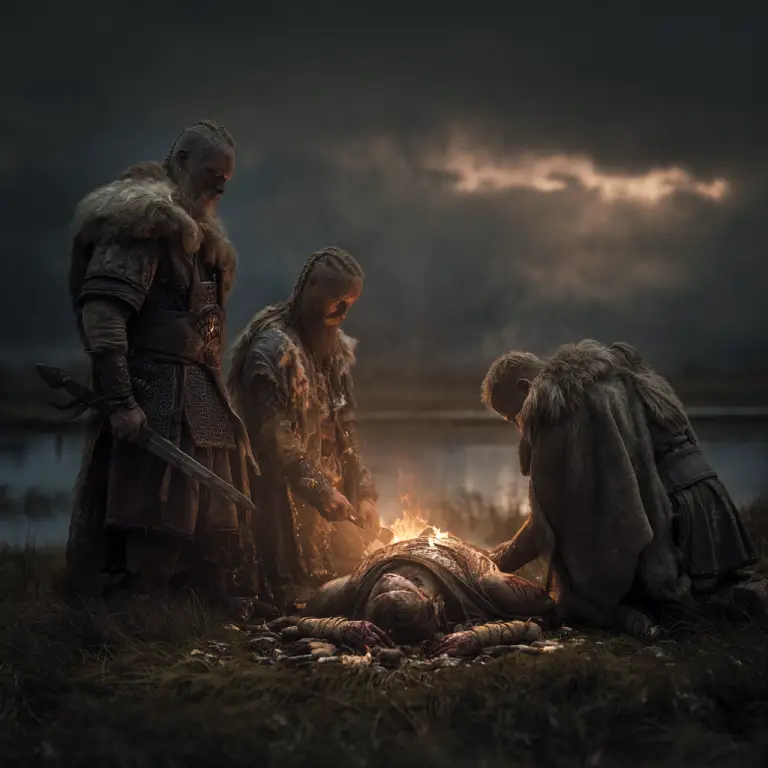Did Vikings Sacrifice Humans?
The question of whether the Vikings practised human sacrifice has long fascinated historians and archaeologists. The evidence suggests that ritual killing did take place in certain contexts, although it was far less common than later myths and popular culture sometimes suggest.
Written accounts from the Viking Age and shortly afterwards provide some of the earliest references. The Arab traveller Ahmad ibn Fadlan, who met Norse traders along the Volga River in the early 10th century, described the funeral of a Viking chieftain. His account included the killing of a female slave who was said to have volunteered to accompany her master into the afterlife. While scholars debate the accuracy of his report, it remains one of the most striking first-hand descriptions of Viking ritual.
Norse sagas and chronicles compiled in Iceland and Scandinavia also mention sacrifice. Adam of Bremen, an 11th century German cleric, wrote about large-scale ceremonies at the temple in Uppsala, Sweden. According to his account, nine males of every species, including humans, were offered to the gods every nine years and their bodies displayed in a sacred grove. Whether this description was entirely accurate or coloured by Christian bias is uncertain, but it indicates that human sacrifice was at least part of the cultural memory of Viking religious practice.
Archaeological evidence offers further clues. At sites such as Trelleborg and Birka in Sweden, graves have been found where individuals appear to have been killed at the time of burial, possibly to serve the deceased in the afterlife. Some skeletal remains show signs of violent death inconsistent with normal warfare, suggesting ritual killing. In a few bog sites in Denmark, bodies have been discovered which may have been offerings to the gods, continuing a tradition that stretched back into the Iron Age.
It is important to understand the purpose of these sacrifices. They were not random acts of cruelty but ritual practices intended to honour the gods, seek divine favour, or accompany important individuals into the next world. Victims were sometimes slaves or captives of war, and in rare cases, volunteers who wished to join their master or gain prestige through death.
By the later Viking Age and into the Christian era, such practices declined rapidly. Conversion to Christianity brought an end to ritual killing, and by the 11th century human sacrifice had disappeared from Scandinavia. What remained were stories, chronicles and sagas that kept the memory alive.
The evidence therefore indicates that Vikings did sometimes sacrifice humans, particularly in funerary rites and major religious ceremonies. However, these events were exceptional rather than everyday occurrences, and they formed part of a wider religious system that also involved animal offerings, feasting, and complex rituals.
